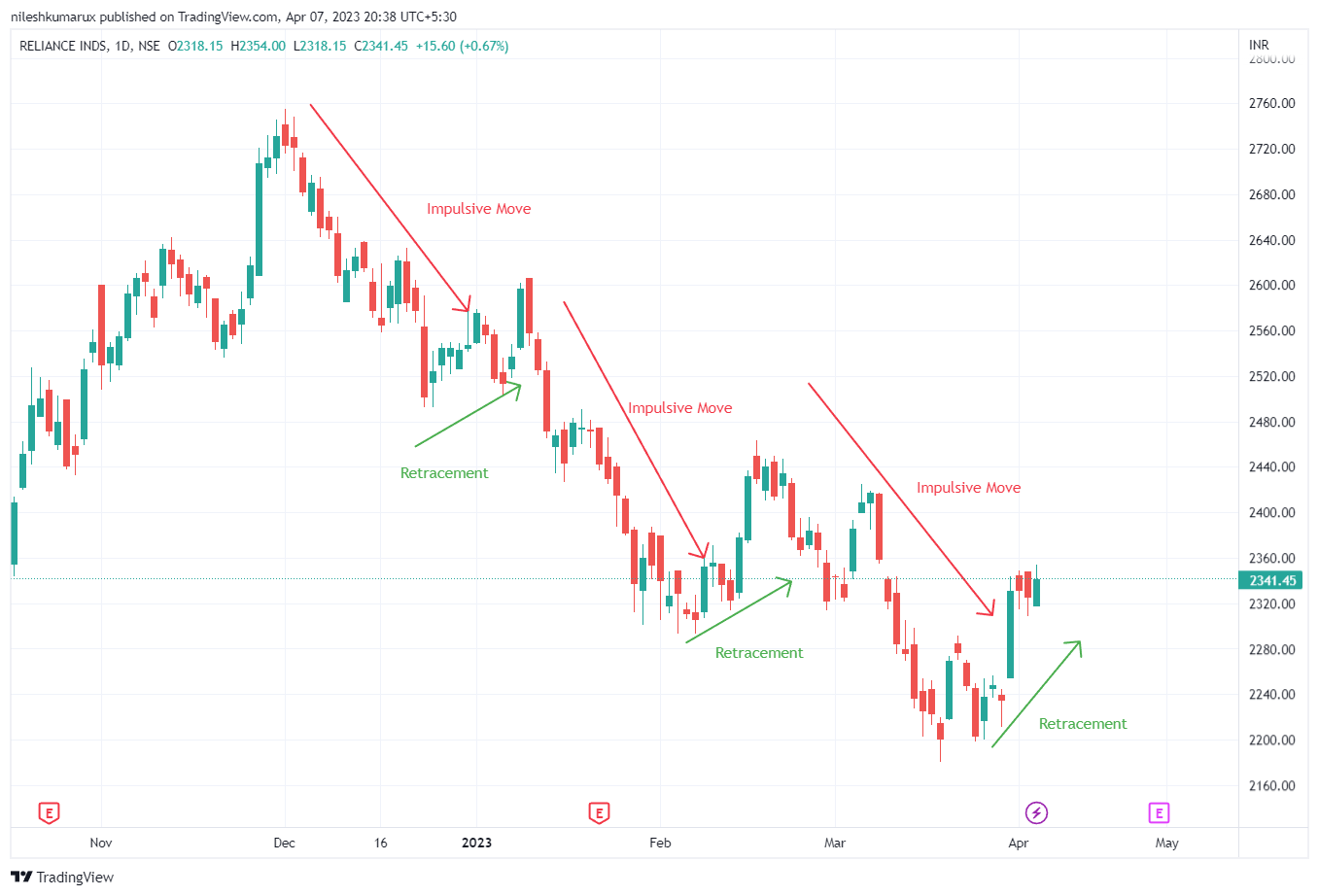Trading in a trending market can be a profitable strategy if done correctly. Learn how to identify the trend, use technical indicators, set stop-loss and trailing stops, manage your risk, and monitor the market to trade successfully in a trending market.
When it comes to trending markets, there are typically two key movements to take note of. The first movement is known as the impulsive move, while the second is referred to as the retracement move.

The market is displaying higher highs and higher lows, a clear indication of a bullish trend. Given this, one may consider buying into the market. However, it’s important to note that the market is comprised of two distinct movements: the impulsive move and the pullback or retracement move (also known as a corrective move).

In the above illustration, we can observe a market in a downtrend. The optimal trading decision would be to sell the market at the start of an impulsive move.
To anticipate the onset of an impulsive move in a trending market, it’s crucial to become proficient in creating support and resistance levels.
Tips to Trade Trending Market
To effectively trade a trending market, it is crucial to follow certain steps. The first step is to determine if the market is trending or not, which can be identified by observing the price action and using technical indicators such as moving averages, trend lines, or MACD.
After identifying the trend, it’s important to determine its strength by analyzing factors like the slope of the trendline, the distance between the price and the moving average, or by using an oscillator like the Relative Strength Index (RSI) or the Average Directional Index (ADX).
Once you have identified the trend and its strength, finding the right entry and exit points is crucial. This can be done using technical indicators such as support and resistance levels, moving averages, or Fibonacci retracements. Additionally, price action patterns like breakouts, pullbacks, or trend line bounces can be used to enter and exit trades.
Risk management is also critical in trading, and stop-loss orders can be used to limit losses while take-profit orders can secure profits. Proper position sizing is also important to ensure that you don’t risk more than a small percentage of your account on any one trade.
To be successful in trading, it’s important to stay disciplined and stick to your trading plan. Avoid making impulsive decisions and keep a record of your trades to learn from your mistakes and improve your skills over time.
Overall, trading a trending market requires technical analysis skills, risk management, and discipline to take advantage of the trend and make profitable trades.